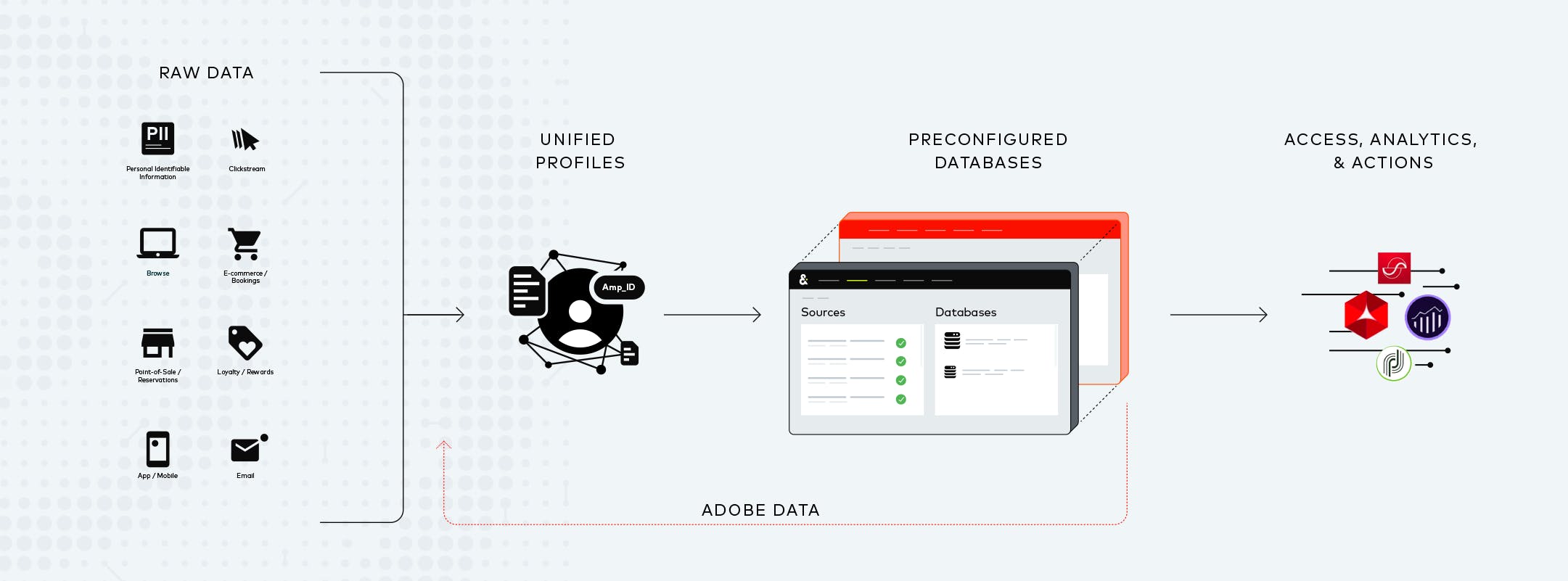If you’re in the marketing world, you’re aware of the big marketing clouds that hover over us all. When functioning optimally, the cloud should serve as a digital partner with thorough knowledge of each and every customer. Marketers must carry out the most challenging tasks daily — capturing the attention of increasingly fickle consumers and delivering unforgettable experiences. What’s more, customer experiences must feel natural and personalized to them, despite being pre-orchestrated. Finally, to make sure that customers are consistently happy, you need the ability to change course and pinpoint where you made your errors.
This is a tall order, and having the right tools there to help can make a marketers’ job easier. Enter the cloud.
The bounty of the cloud
“Marketing cloud” refers to a suite of cloud-based marketing tools which help marketers efficiently manage customer relationships and make up-to-date plans and decisions.
Here’s what marketing clouds should be able to do:
Curate CX: Smoothly orchestrating customer experiences across different platforms so that every customer has a personalized journey that feels unique to them.
Organization: Clouds can manage and coordinate all aspects of a campaign. For example, defining the audience, accurate customer targeting, and designing and executing omnichannel marketing campaigns.
Information hub: In theory, a cloud should consolidate a customer’s entire history in one neat space, allowing you to easily view their purchase history, purchase preferences, and frequency.
Storm clouds = trouble brewing
You’ve invested in a marketing cloud and you’re generally happy with the results, but you might notice that there are areas that still need some help. Here are some common obstacles that arise with marketing clouds:
Siloed data: despite the efforts of top marketing clouds, unifying scattered and disparate data is still a herculean task for IT teams.
Rigid schemas and formats: clouds usually have inflexible schemas that make the task of crafting and shaping data painful and time-consuming.
Customer profiles: consumers are constantly evolving and clouds are not outfitted with the identify resolution software to keep keep profiles accurate and up-to-date.
Flexibility: after the time and money spent standing up a cloud, the data can only work with that particular cloud and lacks the ability to connect with other tools.

Watering your marketing cloud
Imagine your perfect marketing cloud solution — what would it look like? It would be easy to bring in new data in any form, connect the data with a common linking key and apply identity resolution to build trusted customer profiles, without months of effort. It would be easier to get your marketing cloud to active use cases, and much faster time to value.
All of the above is possible, but only if you begin with quality data. It's like they say, garbage in equals garbage out. Think of it like this: you can purchase the best car money can buy, but it will only run the way it’s supposed to with premium fuel. Even if you have the most sophisticated marketing tools in the world, the outcome will be subpar without the correct input. Top-notch data is magic in its own right — and if you put magic in, you’ll get magic out. Quality data leads to premium results downstream.
Profile Accelerator for Adobe
Amperity Profile Accelerator for Adobe was painstakingly designed to address existing cloud issues and to deliver value, fast. It has the power to incorporate new customer data sources — in any form — on the fly, and immediately put them into action, producing powerful insights to fuel marketing campaigns. Messy data is treated by pre-configured mapping, fitting your information into Adobe’s Experience Data Model (SDM) schema, saving time and money.
